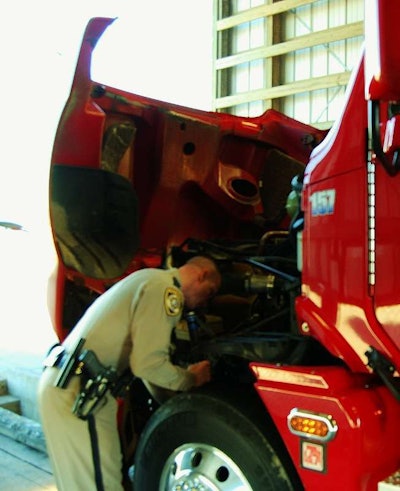
A CSA Subcommittee this week concluded three prioritized issues to take to a full committee later this year — crash accountability, data quality issues, public display of carriers’ Safety Measurement System scores.
The CSA Subcommittee to the FMCSA’s Motor Carrier Safety Advisory Committee ended its Feb. 5-6 meeting with the recommendations that will be put to the full committee for consideration in April when it convenes again. Issues taken up were determined by each member ranking his or her top three CSA problems. Various data quality problems ranked No. 3, the problematic nature of the public display of carrier Safety Measurement System scores No. 2, and how to address crash fault and/or preventability in the Crash Indicator Behavioral Analysis and Safety Improvement Category (BASIC) took the top spot.
“Using all information that the Agency has before it,” draft recommendations read, “FMCSA should exclude crash data for which there is a clear determination of not-at-fault” or non-preventability on the accident report or elsewhere “for purposes of computing a carrier’s Crash Indicator BASIC score.”
“I’ve referred to [CSA] as a ‘work in progress’ before, and have somewhat been chastised because of that,” said Owner-Operator Independent Drivers Association Executive Vice President Todd Spencer. But, he added, “these are things that diminish the value of the product.”
Practical considerations notwithstanding, most committee members felt that in instances where fault was noted on crash reports it should be considered in the scoring, while a minority suggested that FMCSA’s own higher standard of “preventable” or “nonpreventable,” determined during compliance reviews where crash issues are found that could impact a company’s safety rating, was a better mark.
| Data-quality recommendations The CSA Subcommittee was more united behind a series of recommendations on how to improve the quality of the data on which CSA is based:
|
Part of the rationale of dissenting members (representing truck-safety-advocacy communities) relied on Tuesday, Feb. 5, presentations to the committee from accident-reconstruction professionals that cast no shortage of doubt on roadside-level officers’ ability to adequately make the final determination of fault, particularly in complicated multi-vehicle accidents. True Value Company Transportation Senior Director Gary Palmer, however, disputed the need for the high standard of preventability to be met before a crash could be considered in a carrier’s scoring. “Are we letting the exception drive the rule?” he asked, given the clear-cut nature of fault in the large majority of DOT-recordable crashes. “Because there’s some concern about [a relative few] accidents where it’s difficult to determine fault, we’re utilizing all accidents” in determining Crash Indicator scores with no fault determination.
Majority recommendations also considered other areas of potential improvement related to crashes, including Con-way Freight Safety Vice President Robert Petrancosta’s contention that FMCSA should analyze whether redefining a DOT-recordable crash (for example, to exclude tow-away crashes from the definition) would turn the Crash Indicator into a better predictor of future crash risk. “Maybe there’s an opportunity to merge all these things together and develop a better standard and better consistency with a more narrow level of control.”
Preventability/fault determinations, he added, could be opened up to challenge via the FMCSA’s DataQs system, where the only challenge-able item related to crashes today is whether or not a crash is assigned to the correct DOT number.
The recommendations came square in the middle of the FMCSA’s long-term study of whether inclusion of preventability determinations in CSA crash measures makes the enforcement regime a “sharper tool,” in the words of Compliance Division Chief Thomas Kelly. The agency wants to know if the Crash Indicator would be a “better predictor” of future crashes as well as whether it’s possible to make accurate preventability determinations with current agency resources. If using preventability determinations doesn’t improve the Crash Indicator BASIC by much, “do we want to spend money going down this road to determine preventability?” Kellyasked.
Results of the yearlong effort are expected in July of this year, he added.
Ultimately, an eight-person majority on the subcommittee showed preference for the “fault” standard, at once recognizing that in some jurisdictions around the nation officers are expressly cautioned not to assign fault in the initial accident report, even in clear-cut situations. FMCSA Associate Administrator for Enforcement Bill Quade cautioned members that including crash fault in the near term could introduce more geographical biases in the data, a data-quality concern of most subcommittee members.
All the same, “preventability seems like just a wide-open standard,” said Owner-Operator Independent Drivers Association Executive Vice President Todd Spencer.
“Police reports do not go to the level of preventability,” said Janice Mulanix of the California Highway Patrol, acknowledging practical considerations.
Should CSA BASIC scores remain public?
A majority of committee members urged the agency to withhold percentile rankings in the BASICs from public view until other underlying issues could be resolved. Realizing withholding the rankings in total was unlikely to be something the FMCSA would act upon, compromise recommendations were as follows:
- Remove rankings from public view in BASICs where the numbers don’t correlate directly to crash risk (Driver Fitness, Controlled Substances/Alcohol).
- Keep the new Hazardous Materials Compliance BASIC measures hidden from public view, given similar lack of crash-risk correlation.
- Abstain from provide guidance or otherwise encouragement to third parties on how to use SMS data for carrier selection.
Unanimity on the issue was far from being achieved, however, with four members, largely from safety-advocate and law-enforcement communities, either dissenting directly or abstaining from endorsement of these recommendations and offering points of view in favor of public use of CSA data.










